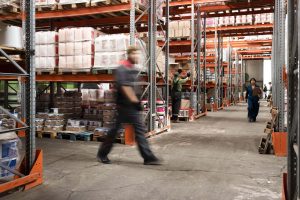Ever since Netflix became an integral part of our daily lives, the realm of shopping has changed forever. One may ask how an OTT (Over The Top) video platform has anything to do with shopping! A lot! The online streamlining platform has transformed shopping behavior from careful consideration to impulsive, unplanned, and spontaneous buying decisions. Let’s see how.
Understanding the Netflix Consumer Mindset
In 2023, Netflix’s user base touched a whopping 238.3 million! After a long day at work, many people end up flopping on their couch, surfing through the hundreds of titles on Netflix. Most do not have a specific movie or series in mind they want to watch. They just flick through their home pages to see what they like. If something catches their eye, they begin watching it or even binge-watching it until the wee hours.
So, how does Netflix ensure it delivers content that interests viewers? While it does use psychology to perfect the customer experience, it also relies heavily on its recommendation engines. Using a variety of factors, such as user viewing history, ratings, and reviews, it suggests movies and TV shows that are most likely to strike a chord with users while also encouraging them to come back for more.
What is important to note is that Netflix delivers what it believes the users need, when they need it. Instead of compelling users to rack their brains and physically type the name of a particular movie or show, it eases their decision-making by suggesting titles that cater to their present mood, state of mind, and viewing needs.
Relating This Mindset to the Modern Shopper
As people get used to the Netflix culture, they tend to exhibit the same behavior while shopping for goods online. Many shoppers today do not visit e-commerce sites because they have a need. They do so to scan through the latest products, top deals, discount vouchers, etc. Driven more by emotions or their current state of mind, shoppers make purchasing decisions on the spot, and not because of an underlying need.
According to a 2023 survey, over one-third of people say that most of their shopping is impulse purchases. Retail, for many people, is synonymous with therapy and makes them feel good. These shopping decisions are made on the spur of the moment, without any forethought or planning. Such on-demand, impulse-driven shopping is tied largely to their emotions. With economic uncertainty at its peak, many also love to surf through their favorite e-commerce websites to grab a good deal or purchase products with free shipping or returns.
Meeting the Demands of the Impulsive Shopper With Micro Fulfillment Centers
The popularity of Netflix has led to several challenges for modern retailers. Personalization has become key, as has convenience. While variety and cost are still important, time-to-delivery has become the defining factor for customer satisfaction.
Just as Netflix offers immediate access to content, today’s shoppers expect purchased products to be made available to them almost immediately. The pressure on retailers to enable same-day deliveries of the products customers purchase online is at an all-time high. In 2023, the global same-day delivery services market was $7.93 billion, up from $6.44 billion in 2022, growing at a compound annual growth rate (CAGR) of 23.1%.
Increased customer satisfaction and trust, better brand loyalty, and higher sales are just some of the benefits of same-day deliveries. But in highly populated, congested urban areas, how do retailers cater to this demand? How do they pack and ship their products from remote warehouses and into the homes of customers? How do they ensure products reach customers in the shortest time possible?
Micro fulfillment centers, or MFCs, are becoming an increasingly popular way to serve customers at the point of need. By bringing warehousing capabilities into choked city centers, MFCs pave the way for:
- High operational efficiency: MFCs allow retailers to move small warehousing facilities to urban centers, bringing inventory closer to the end consumer. These fulfillment centers are often highly automated, accelerating order fulfillment and improving operational efficiency.
- Reduced transit times: Unlike large warehouses, which have a massive inventory, MFCs are much smaller and store goods for the short term. They allow retailers to pick, pack, and ship products as soon as orders come in, thus enabling same-day deliveries.
- Minimized costs: As population density and urbanization increase and as customers exploit the convenience of faster checkouts, MFCs enable retailers to bypass the use of expensive retail stores and remote fulfillment services. They help accelerate delivery times by picking, packing, and shipping orders within minutes of purchase.
Achieving Delivery Goals with Cartesian Kinetics
Cartesian Kinetics builds and implements advanced robotic automation systems, especially for micro fulfillment centers. Employing a modular and flexible design, these automation systems are built for the last mile. They help modern retailers keep up with the growing same-day delivery demands of customers while also helping them make their MFCs future-ready.
With Cartesian Kinetics, you can bring down three- to four-day deliveries to same-day delivery, improving click-to-door speeds. By unifying storage, sorting, packing, and delivery into one single, agile, fluid movement, our automated systems enable you to keep up with customers’ increasingly fast-paced buying patterns. Our innovative automation systems rely on a deep tech-enabled robotic fulfillment stack exclusively for MFCs. Drive transformation in manufacturing and enable supply-to-demand chain automation. Wow your impulse-driven customers through agile micro fulfillment and move goods at the same speed of data. Contact us today!





